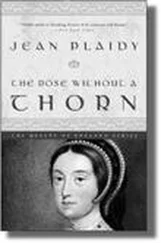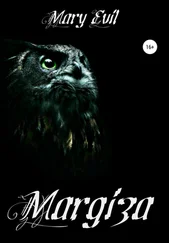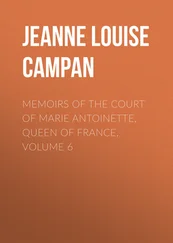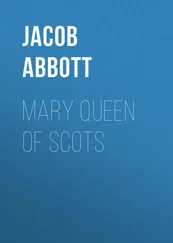Henry Bell - Life of Mary Queen of Scots, Volume 1 (of 2)
Здесь есть возможность читать онлайн «Henry Bell - Life of Mary Queen of Scots, Volume 1 (of 2)» — ознакомительный отрывок электронной книги совершенно бесплатно, а после прочтения отрывка купить полную версию. В некоторых случаях можно слушать аудио, скачать через торрент в формате fb2 и присутствует краткое содержание. Жанр: foreign_antique, foreign_prose, на английском языке. Описание произведения, (предисловие) а так же отзывы посетителей доступны на портале библиотеки ЛибКат.
- Название:Life of Mary Queen of Scots, Volume 1 (of 2)
- Автор:
- Жанр:
- Год:неизвестен
- ISBN:нет данных
- Рейтинг книги:5 / 5. Голосов: 1
-
Избранное:Добавить в избранное
- Отзывы:
-
Ваша оценка:
- 100
- 1
- 2
- 3
- 4
- 5
Life of Mary Queen of Scots, Volume 1 (of 2): краткое содержание, описание и аннотация
Предлагаем к чтению аннотацию, описание, краткое содержание или предисловие (зависит от того, что написал сам автор книги «Life of Mary Queen of Scots, Volume 1 (of 2)»). Если вы не нашли необходимую информацию о книге — напишите в комментариях, мы постараемся отыскать её.
Life of Mary Queen of Scots, Volume 1 (of 2) — читать онлайн ознакомительный отрывок
Ниже представлен текст книги, разбитый по страницам. Система сохранения места последней прочитанной страницы, позволяет с удобством читать онлайн бесплатно книгу «Life of Mary Queen of Scots, Volume 1 (of 2)», без необходимости каждый раз заново искать на чём Вы остановились. Поставьте закладку, и сможете в любой момент перейти на страницу, на которой закончили чтение.
Интервал:
Закладка:
Horace Walpole, after having made extensive inquiries on this subject, has recorded, that he never could ascertain the authenticity and originality of any portrait of Mary, except of that in the possession of the Earl of Morton, which was painted when she was at Lochleven. Chalmers, in order to come as near the truth as possible, employed Mr Pailou, an artist of ability, to compare the picture belonging to the Earl of Morton, with two or three other undoubted originals which have been discovered since Walpole wrote. Pailou commenced by sketching the outline of his picture from Lord Morton’s original. He then proceeded to the examination of three genuine portraits of Mary, one in the Church of St Andrew in Antwerp, another in the Scotch College at Douay, and a third in the Scotch College at Paris. Neither did he forget the profile heads of Mary struck upon her coins, nor the marble figure representing her on her tomb in Henry VII’s Chapel, which Walpole thought a correct likeness. Mr Pailou thus made Lord Morton’s picture the basis of his own, but, as he advanced, constantly referred to the others, “till he got the whole adjusted and coloured.” Though we cannot exactly approve of thus cooking up a picture from various different sources, and should be inclined to think, that too much was left by such a mode of procedure to the arbitrary taste of the artist, we nevertheless feel satisfied that Mr Pailou has hit upon a tolerably accurate likeness. His picture, engraved by Scriven, forms the frontispiece to the second volume of Chalmers’s work. The brow, eyes, mouth, and chin, he has given with great success. But the painting is far from being without faults; – the face is a good deal too round and plump, the nose is made slightly aquiline – a decided mistake, – and the neck is much too short, at least so it appears in the engraving.
The portrait of Mary, which forms the frontispiece to the present volume, and on which we place greater reliance than on any with which we are acquainted, is an engraving executed expressly for this work, from an original picture of much merit. 20 20 This picture originally belonged to Lord Robert Stuart, Earl of Orkney, one of Mary’s natural brothers, and is now in the possession of William Trail, Esq. of Woodwick, Orkney, into whose family it came, together with other relics of the Earl, by the marriage of an ancestor of Mr Trail, to one of his descendants. Vide Appendix A.
It was painted when Mary was in France, by an Italian artist of eminence, who flourished as her cotemporary in the sixteenth century, and whose name is on the canvas. It would have been impossible to say at what precise age it represented Mary, though, from the juvenility of the countenance, it might have been concluded that it was taken a year or two before she became Dauphiness, had not the painter fortunately obviated the difficulty, by inserting immediately after his own signature the date, which is 1556, when she was just fourteen. It is upon this picture that we have chiefly founded our description of Mary’s personal appearance. What gives us the greater confidence in its authenticity and accuracy, is, that it very exactly corresponds with two other portraits, believed on good grounds to be originals. This is a strong circumstance, for it is a very common and just remark, that almost no two likenesses of Mary agree. The paintings to which we allude are, first, one at the seat of Logie Almond, which represents Mary at the same age, but in a religious habit. It gives precisely the same view of the left side of the face as the engraving in this volume does of the right. From the style and other circumstances, it is very probable, that both pictures were painted by the same artist. The second is in the possession of his Grace the Duke of Hamilton, and is in one of the private apartments at Hamilton palace. It represents Mary at a somewhat more advanced period of life, but the features are quite the same. There is still a third picture, said to be an original, in the collection of the Marquis of Salisbury, at Hatfield House, and which has been engraved for Miss Benger’s Memoirs, which very closely resembles our own. To be yet more assured, we have carefully examined the heads upon Mary’s gold and silver coins. Some of these are inaccurate, but they have all a general resemblance to each other. A silver coin, of 1561, and the gold real stamped in 1562, agree minutely with our picture, – a circumstance which cannot but be considered a strong corroboration of its truth. It is unnecessary to make any apology to the reader for having entered thus minutely upon a subject of so much general interest. 21 21 It is to the kindness of John Watson Gordon, Esq. deservedly one of the most eminent portrait-painters in Scotland, that we are indebted, both for the use of the painting from which the engraving has been made, and for several of the facts we have stated above. Mr Gordon has executed three copies of the picture – all of them exceedingly beautiful and accurate – possessing the merits, without any of the dusky dimness, which time has thrown over the original.
With regard to the asseverations of cotemporary writers, as to the effects which Mary’s beauty produced, many of them are almost too extravagant to be believed. They prove, nevertheless, that, whatever beauty may be, whether a mere fortunate arrangement of material atoms, or a light suffused upon the face, from the secret and etherial mind, it was a gift which Nature had lavishly bestowed on Mary. A year or two previous to her marriage, when walking in a religious procession, through the streets of Paris, with a lighted torch in her hand, a woman among the crowd was so struck with her appearance, that she could not help stopping her to ask, – “Are you not indeed an angel?” Brantome, with more questionable sincerity, compares her, at the age of fifteen, to the sun at mid-day. He tells us also, that the brother of Francis, afterwards Charles IX., never saw even a picture of Mary, without lingering to gaze upon it, declaring passionately, that he looked upon Francis as the happiest man on earth, to possess a creature of so much loveliness. Nay, Brantome even goes the length of asserting, that no man ever saw Mary who did not lose his heart to her. He is pleased, likewise, with some naïveté, to pay her several high compliments at the expense of her native country. It appears that Mary, amidst all the gaieties of the French Court, had not forgot her early residence at Inchmahome, in the quiet lake of Monteith. Actuated by these recollections and other motives, she delighted to testify her regard for Scotland in various ways; and, among others, by frequently wearing in public the graceful Highland costume. The rich and national Stuart tartan became her exceedingly; and Brantome, who seems to have been greatly puzzled by the novelty of the dress, is nevertheless forced to declare, that when arrayed after “the barbarous fashion of the savages of her country, she appeared a goddess in a mortal body, and in a most outré and astonishing garb.” Mary herself, was so fond of this costume, that she wore it in one of the portraits which were taken of her in France. If she appeared so beautiful thus “ habillée à la sauvage ,” exclaims Brantome, “what must she not be in her rich and lovely robes made à la Française, ou l’Espagnole , or with a bonnet à l’Italienne ; or in her flowing white dress, contending in vain with the whiteness of her skin!” Even when she sung, and accompanied herself upon the lute, Brantome found occasion to discover a new beauty, – “her soft snowy hand and fingers, fairer than Aurora’s.” “Ah royaume d’Escosse!” he touchingly adds, “Je croy que, maintenant, vos jours sont encore bien plus courts qu’ils n’estoient, et vos nuits plus longues, puisque vous avez perdu cette Princesse qui vos illuminoit!” The historian, Castelnau, in like manner, pronounces Mary “the most beautiful and accomplished of her sex;” and Mezeray tells us, that “Nature had bestowed upon her every thing that is necessary to form a complete beauty;” adding, that “by the study of the liberal arts and sciences, especially painting, music, and poetry, she had so embellished her natural good qualities, that she appeared to be the most amiable Princess in Christendom.” On the occasion of her marriage, not only were the brains of all the jewellers, embroiderers, and tailors of Paris put in requisition, but a whole host of French poets felt themselves suddenly inspired. Epithalamiums poured in from all quarters, spiced with flattery of all kinds, few of which have been borne down the stream of time so honourably for their author’s abilities as that of Buchanan, who, having long struggled with poverty, had at last risen to independence, under the patronage of Cardinal Lorraine. This poem is well known, but is not more complimentary than that of Joachim du Bellay, who, after comparing Mary to Venus, concludes his song with these lines: —
Читать дальшеИнтервал:
Закладка:
Похожие книги на «Life of Mary Queen of Scots, Volume 1 (of 2)»
Представляем Вашему вниманию похожие книги на «Life of Mary Queen of Scots, Volume 1 (of 2)» списком для выбора. Мы отобрали схожую по названию и смыслу литературу в надежде предоставить читателям больше вариантов отыскать новые, интересные, ещё непрочитанные произведения.
Обсуждение, отзывы о книге «Life of Mary Queen of Scots, Volume 1 (of 2)» и просто собственные мнения читателей. Оставьте ваши комментарии, напишите, что Вы думаете о произведении, его смысле или главных героях. Укажите что конкретно понравилось, а что нет, и почему Вы так считаете.












